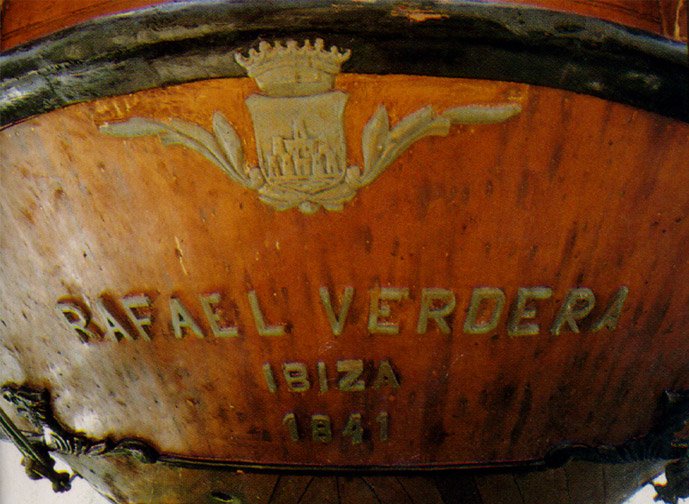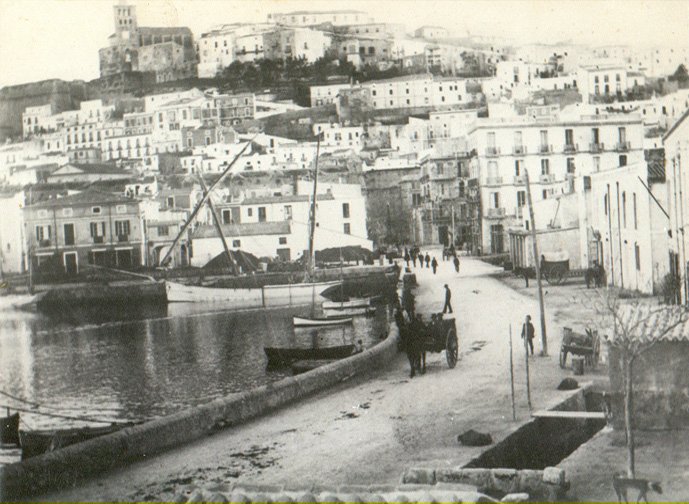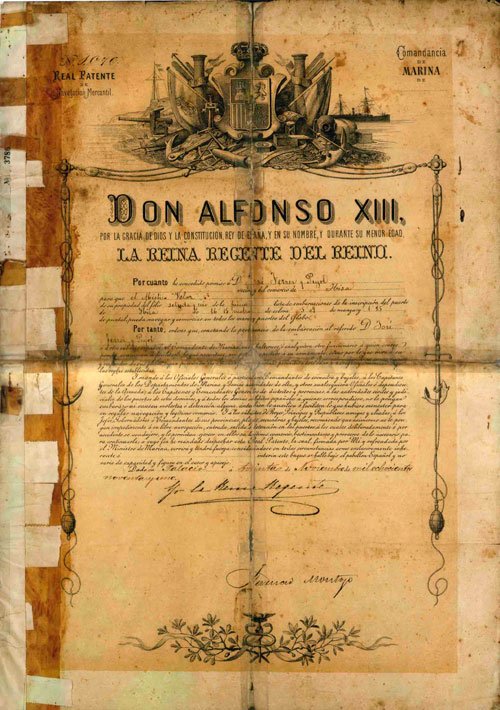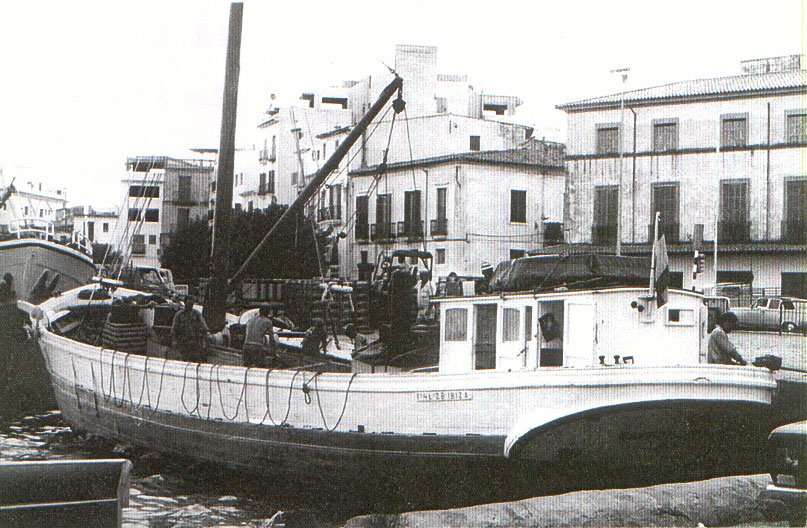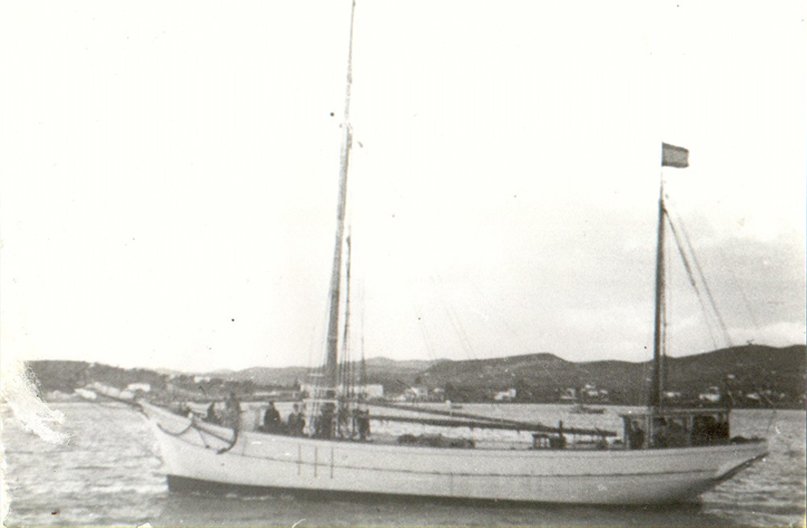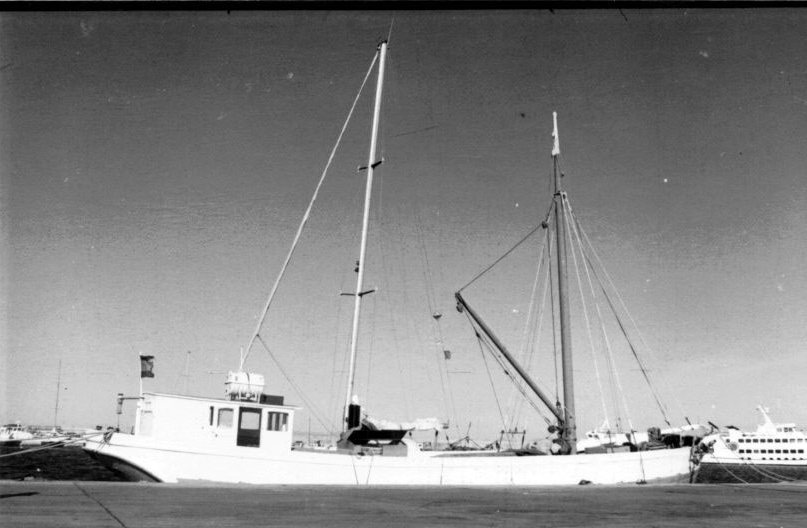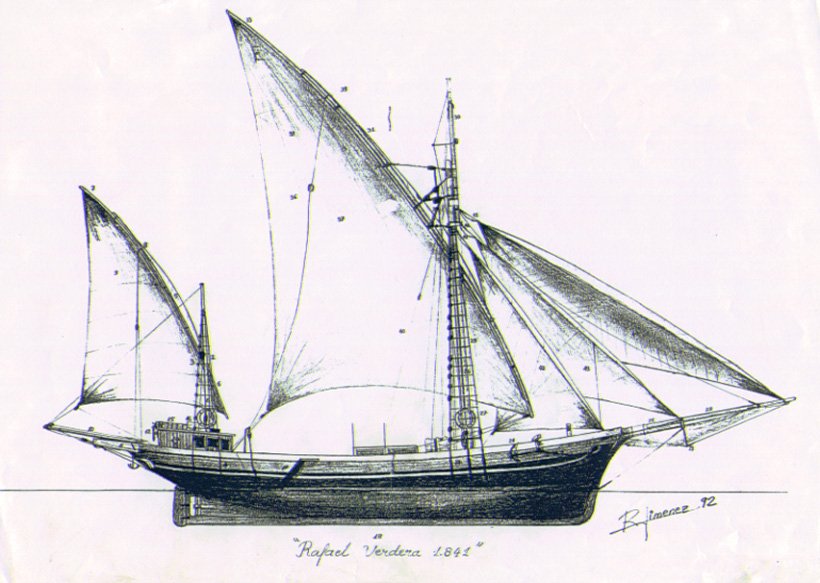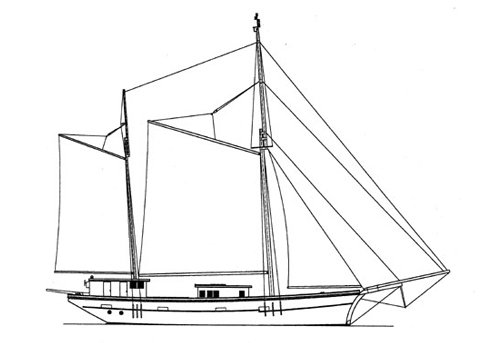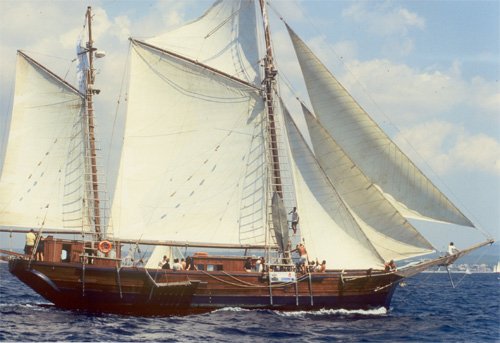
The Sailboat
TECHNICAL DATA
Measurements
| Overall length (with bowsprit) | 30,00 mts |
| Length on deck | 22,77 mts. |
| LWL | 18,80¨ |
| Maximum beam | 5,59¨ |
| Puntal | 2,46¨ |
| Calado | 2,75 mts. |
| Displacement | 60,42 TRB |
| Diesel propulsion (Volvo) | 2×145 HP |
| Generator (STAGMENA) | 20 kw |
| Fuel Capacity | 4.000 l. |
| Water capacity | 1.000 l. |
Plan
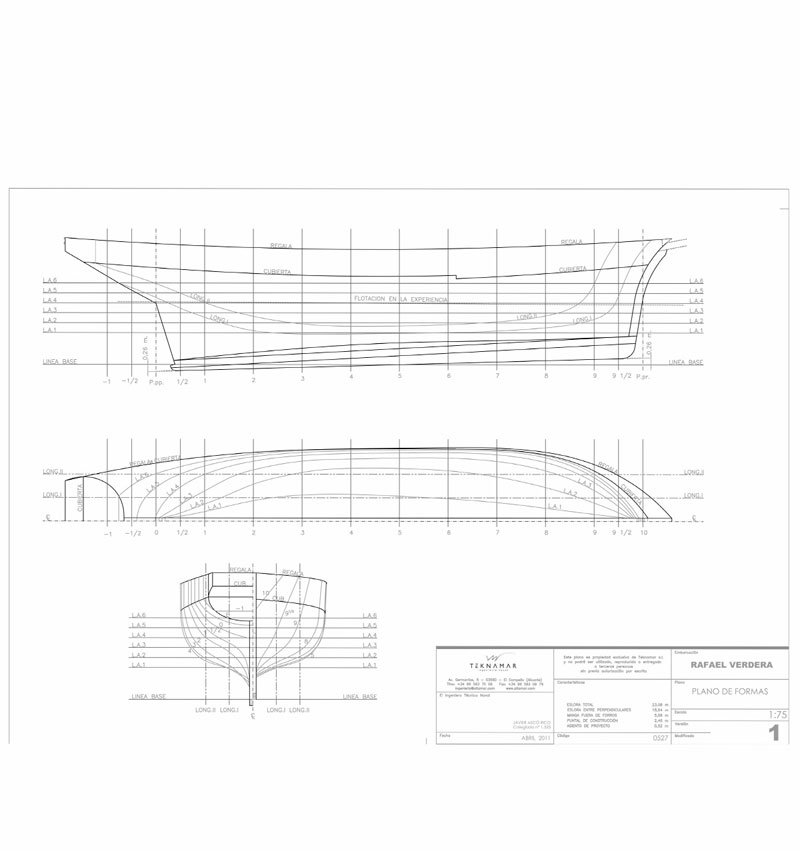
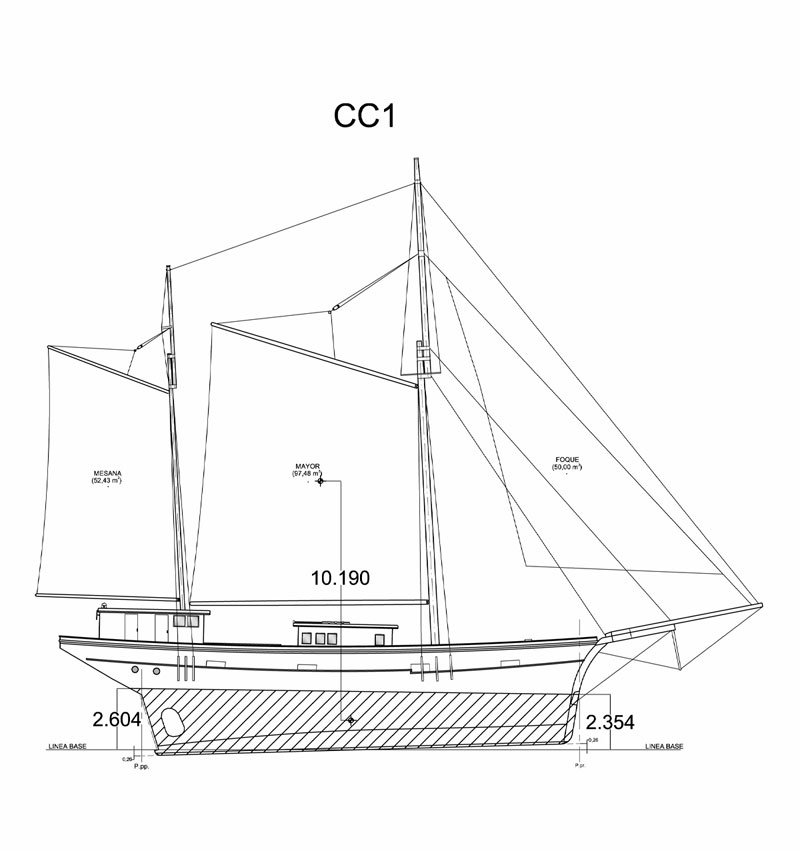
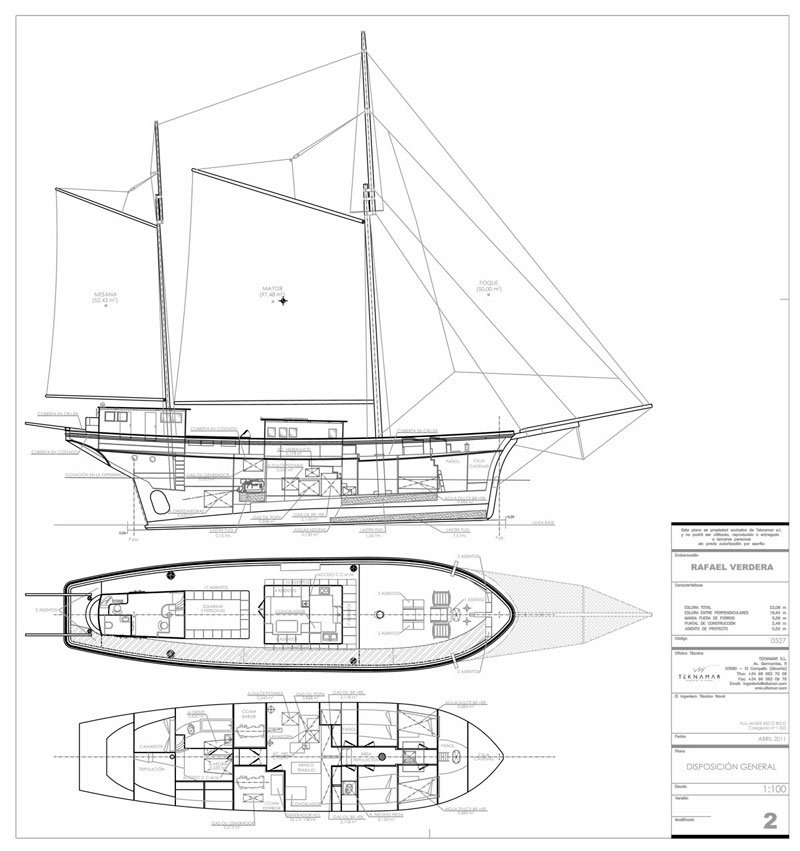
Other data of interest
Sail
Ketch rig with two masts, main and mizzen, slightly fallen to stern and topmasts. Gaff sails main and mizzen and three staysails in front of the mainmast rooted in the bow and bowsprit (ratchet, jib and flying jib) and several flyers jibs with butt of the topmast halyard, scandalous in the oldest style. In hydraulic furling jib and flying jib.
Classification
It is classified as a passenger ship in group 1, class G, with a capacity maximum on day sailings of 60 passengers and a minimum crew of three people.
Navigation
Robertson autopilot, Raytheon radar with mini harp, GPS, depth sounder Furuno 1,500 mts., Computer and electronic navigational charts.
Communications
Shipmate VHF with DSC (mmsi No. 224002260), HF / MF distinctive BLU Sailor EA2942
Security
EPIRB, rafts, rigid dinghy with 15 hp outboard motor.
Extras for divers
Coltry compressor MCH16 of about 260 liters / min.
Home appliances
Compac, stereo, microwave, washing machine, water treatment plant sea, freezer and refrigerator.
Accommodation
What was formerly the cargo hold has been modified to accommodate up to 10 persons in 4 cabins. It is spacious, airy and everything is maintained to keep the character and simplicity of a wooden hull made for freight for more than half century. The boat capacity is 60 people per sailings a day and 10 for full weeks.

HISTORY OF THE RAFAEL VERDERA
The Rafael Verdera sailboat, is recorded on Page 4 of the 2nd Register List of Ibiza. It was launched at sea on April 15, 1841. That’s making her currently to the oldest active ship of the Spanish fleet.
The NAVIGATION LICENSE was issued in Ibiza in 1891 and is the oldest recorded document still available. It is signed by Maria Cristina, Queen Regent when King Alfonso XIII was still a minor.
The text is written in such exquisite classic maritime language as one could wish for coming from a maritime administration.
Some of the elders in Ibiza and Formentera tell us the boat was formerly a “Llaud” with two masts, and rigged with – we call Falucho. Her form has been adapted to meet the needs of the changing times since.
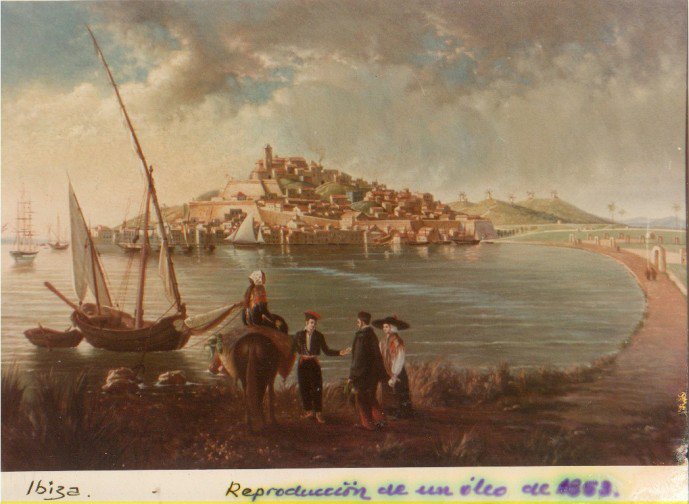
Others who served as sailors onboard in the past, before the civil war say; that the boat sailed to Algiers, holding in addition to her cargo emigrant passengers. During a harder time, when many young families had to leave their homes and seek their livelihood in foreign countries.
In the late nineteenth century the boat was named the Veloz. It was rigged to joined a boat named Mystic to do delivery loads between the Balearic islands and other ports of the Western Mediterranean. As well as cities like Barcelona, Valencia, Marseille, Genoa, Naples and Algiers.
Later the boat was change to a sloop rig and renamed Mary.
In 1932 the Rafael Verdera received her current name in the memory of one of her owners who died in a road accident in “one of those crazy Flying Machines”.
The boat was honoured by the authorities in Ibiza at a centennial party and shortly after that, she was rebuilt as Pailebote with round stern and cabin bridge. To protect the tiller and giving shelter to the crew.
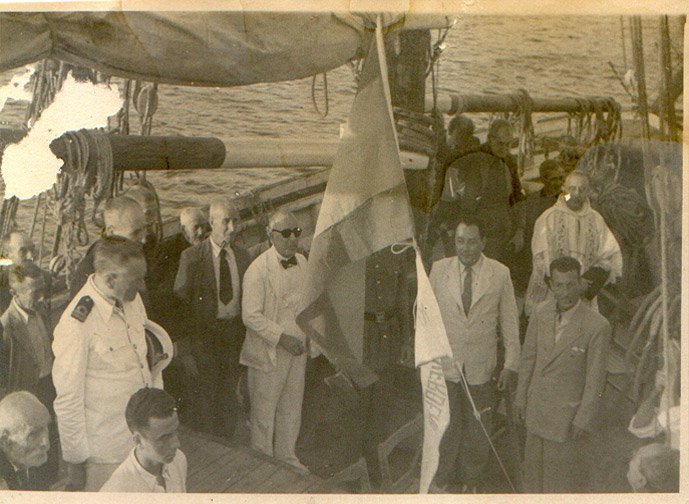
During the hard times of the post war she was called “Sa Balandreta” and transport regularly goods between Palma de Mallorca and Ibiza. “Quan Sa vingui Balandreta Tindrem ho “was a often repeated phrase in Ibiza’s stores. Where black dressed women wore their hair in a long black braid on their back. They sought to buy from the “fora s’Illa”.
In 1920, after 79 years of sailings, her first engine was installed, an Otto Deutz two cylinders and 40 hp, which would be replaced in 1934 with a Volund cylindrical monkey, 65 hp two-stroke “hot head” and this in turn was replaced in 1989 with a Cumins, 6 Cylinders, and 200 hp. In 2000 she received an upgrade with two newly mounted Volvo engines with 145 hp and 2 propellers.
At the turn of the century, the spars and sails on ships of average tonnage underwent many changes, leaving the lateen to small coastal fishing and shipping boats. The gaff sails were easier to work and became fashionable gear for the Sloop, Ketch and Schooner.
The gaff sails were easier to work and became fashionable gear for the Sloop, Ketch and Schooner.
On the Rafael Verdera during the late twentieth century, a Latin sail formerly called Tartana, was restored and modified. Her masts and standing rigging retained her lateen rigs: avantes, hawsers, logs, lovers, ostas, straps …
Antennas masts crossed paths lateen sails luff of states and forestay by rooting in the bowsprit or on deck run carabiners various jibs.
At the stern, a davit for the dinghy and sheets hunt for forwarding on Cover sheet of the mizzen sail, completed the layout of the boat.
We sailed and lived for 14 years on a beautiful and simple vessel with an authentic Latin rig, we enjoyed that experience. But as time has passed by. We have been incrementally transforming the boat, almost without realising it. Necessities and new maritime obligations required us to introduce mechanisms, facilities and even some structural reforms.
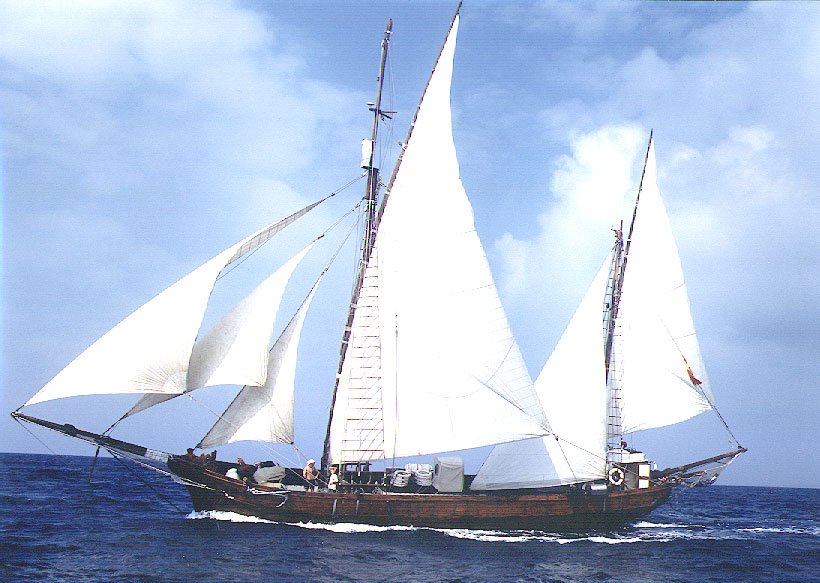
But the boat still retains her tiller and guardians, and that drinking water installation: a wooden barrel and bucket, and a slow and heavy winch rocker. As well the Volund hot head remains and the old Latin antennas 22 and 16 meters long, as well as the hawsers, logs, …etc.
Entering the new century; the millennium, Rafael Verdera has changed her rig again. Becoming “sloop” or in a more technically words we would say a “ketch”.
The last big push to reform the boat, that was started years ago, has increased progressively to cover two thirds of the stern so that the crowning is now about 40 cm higher and the interior area is wider. The interior layout has been changed as well. The two engines lie in two separate chambers now. There is a large engine room, two new cabins on deck. These upgrades have given the ship new life although the maritime lifestyle onboard remains relatively unchanged.

